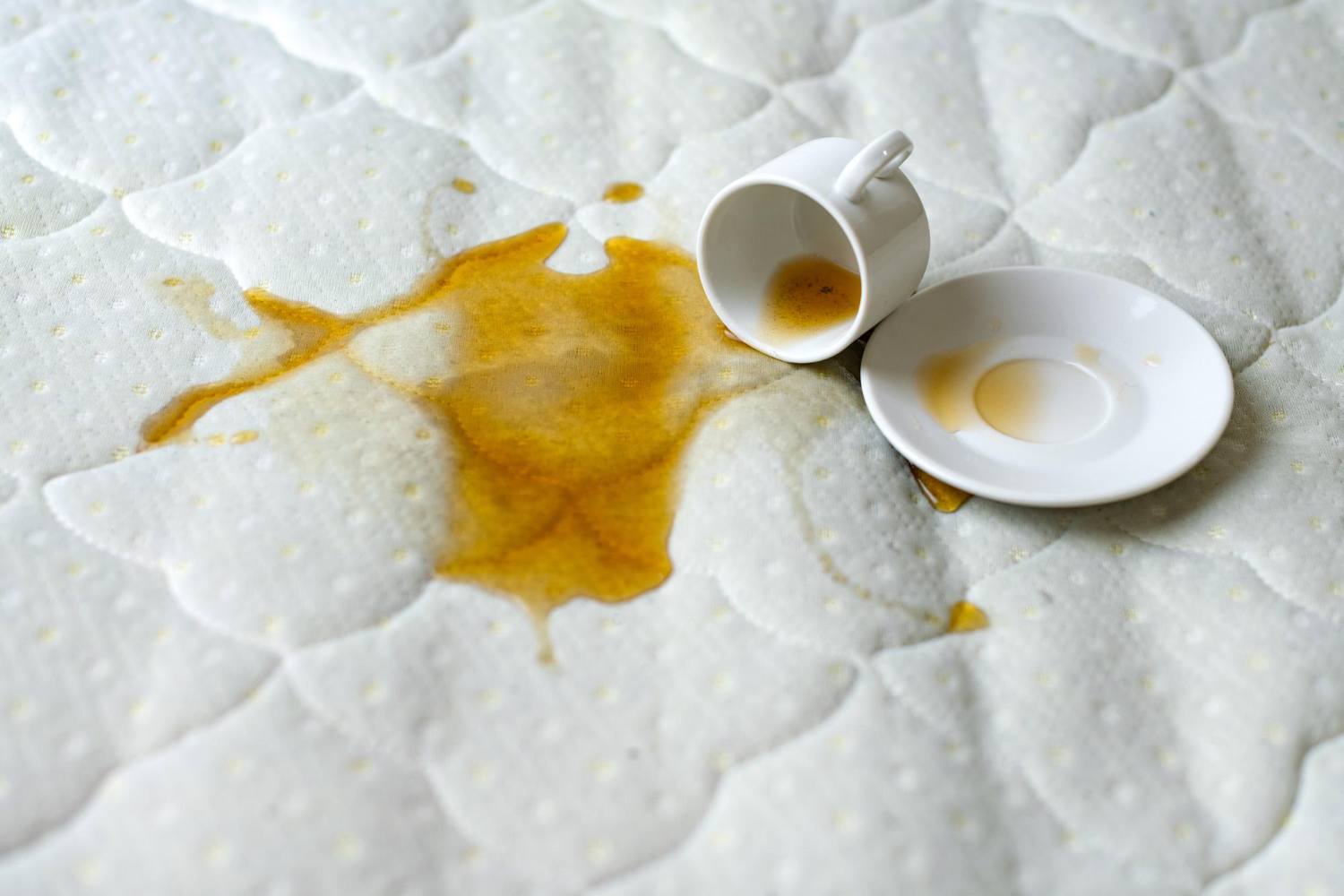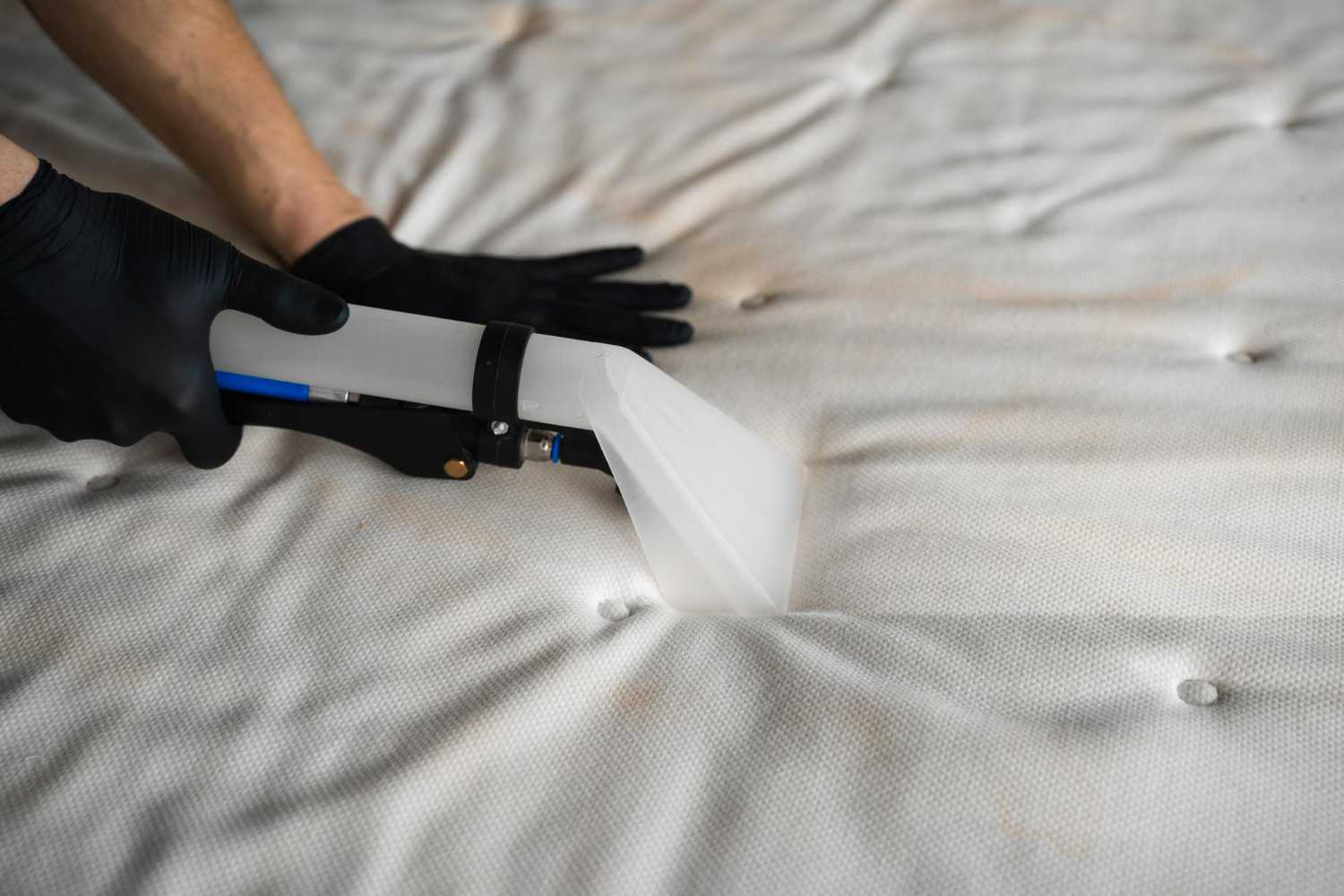
From unexpected late-night spills to accidental mishaps, mattresses often bear the brunt of various stains over their lifetime. These marks can appear in a myriad of sizes, shapes, and hues, each presenting its cleaning challenges. Among the most common are yellow stains, typically caused by bodily fluids. While they may not immediately disrupt your sleep, if ignored, these stains can increase bacteria and germs, compromising your sleep environment.
To effectively address the yellow strains, it’s crucial to understand their origins. Fortunately, there are various methods to clean your mattress. Keep reading to learn how to tackle these blemishes for a fresh and comfortable sleeping surface.
What Causes Yellow Strains?
Let’s have a glance at the common issues that cause yellow strains on mattresses:
Ageing
As the mattress ages, the gradual breakdown of its constituent materials can lead to discolouration. While diligent upkeep can extend the mattress’ lifespan and delay yellowing, the emergence of such stains is ultimately an inevitable consequence of ageing.
Natural Oxidation
Over time, mattresses undergo a natural process known as oxidation, accelerated by exposure to oxygen in the air. This process gradually results in yellowish discolouration of the mattress fabric. These yellow stains are persistent and do not emit any odour.
Saliva
The presence of yellow stains on pillows can often be attributed to saliva, which individuals may unconsciously release during sleep. Within the pillow material, this moisture becomes a favourable environment for bacterial growth. Over time, these bacteria degrade and contribute to the development of yellow discolouration.
Sebum and Sweat
Yellow stains often observed on mattresses and pillows are primarily attributable to the accumulation of sweat and natural body oils known as sebum. Throughout the night, adults can lose 500 to 700 millilitres of sweat, with higher quantities possible for individuals prone to sleeping hot. These bodily fluids permeate the mattress fabric, resulting in discolouration over time.
Drink Spills and Food
Spills of food and beverages can also cause yellow stains on mattresses. The longer substances remain on the mattress fabric, the higher the likelihood of noticeable yellowing. It is advisable to refrain from consuming food and drinks directly on the mattress to minimise the risk of stains.

Contact us and get some exciting and breathtaking cleaning services that restore your home.
Urine
Both human and pet urine can cause yellow stains on mattresses. Once urine has dried, it becomes challenging to remove both the stains and associated odours effectively. Moreover, untreated urine stains can encourage the growth of mould and attract mites, intensifying the deterioration of the mattress over time.
Mould
Accompanied by a musty odour, the yellow stains on mattresses can indicate a more serious issue, such as mould growth. The environment of pillow and mattresses is damp, thriving the production of mould. They not only stain surfaces but also pose potential health risks, risking the sleep environment.
Vomit
Vomit is one of the reasons that results in yellow stains on mattresses, whether from humans or pets. Swift cleanup is essential to prevent the stains from setting and causing unpleasant odours. Addressing any lingering odours can be achieved by using a few drops of essential oil.
Effective Methods of Removing Yellow Stains from Your Mattress
In the following section, you’ll find various techniques to remove yellow stains from a mattress effectively:
Preparation for Cleaning
- Start by vacuuming your mattress to eliminate surface dirt, dust, and debris. Utilise a brush attachment for a more thorough cleaning.
- To prevent future stains and protect against spills, sweat, and allergens, consider purchasing a high-quality mattress protector.
Effective Cleaning Techniques
- Baking Soda: Liberally sprinkle baking soda over the stain. Let it absorb moisture and odours by leaving it for hours or overnight. Thoroughly vacuum to remove all baking soda.
- Enzyme Cleaner: Use enzyme-based cleaners to tackle organic stains effectively. Apply the cleaner directly on the stain as per the product instructions. Let it sit, then gently blot with a clean cloth or sponge. Ultimately, rinse with a moist cloth and let it dry in the air.
- Hydrogen Peroxide and Dish Soap: Combine equal parts hydrogen peroxide and dish soap. Moisturise a sponge with the mixture and moderately blot the stain.
Specific Stain Treatments
- Urine Stains: To commence with removing urine stains, prepare a solution of white vinegar and water of equal parts. Apply it to the stain with a cloth and gently blot. Move forward by rinsing it with a moist cloth and leave it for drying process. For stubborn stains, use an enzyme cleaner designed for urine.
- Sweat Stains: Mix equal parts hydrogen peroxide and an ammonia-free laundry detergent. For removal of stain, apply this mixture to the stain and rub it. Then, let the solution sit on the stain for 15 to 30 minutes. Finally, rinse the effected part with cold water.

Preventive Measures
Implementing a few simple measures can help keep your mattress clean and free of yellow stains.
- To prevent dirt, sweat, and oils from accumulating on your mattress, change your sheets weekly. This practice keeps your sleeping area clean and minimises the risk of stains.
- Use a mattress protector that safeguards it from sweat and other fluids, causing stains. It’s easy to use and can be regularly washed, providing an effective barrier.
- Ensure good air circulation in your bedroom to prevent moisture buildup, reducing the growth of mould. A well-ventilated room helps keep your mattress dry and clean.
- Keep food and beverages out of the bedroom to avoid accidental spills that can lead to stains.
- Promptly clean up any spills to prevent them from entering them into the mattress.
- Make a habbit of following the cleaning guidelines of manufacturer.
Whether to Sleep on a Mattress with Yellow Stains or Not?
If your mattress has yellowed due to oxidation but you’ve maintained good hygiene, there’s no need for concern. However, in other cases, deep cleaning is advised to ensure safety. If you experience itching, coughing, or allergic reactions, it could indicate mould, which poses serious health risks, especially for those with asthma. Mould grows quickly and is tough to remove, necessitating immediate attention.
Optimal Time to Go for a Mattress Replacement
In some cases, despite diligent cleaning efforts, a mattress may reach a point where stains persist, or the mattress itself becomes worn out. It is equally significant to know when to replace your mattress for a healthy sleep. Following are a few of the signs when you need a new mattress:
- Most mattresses last 7 to 10 years. If yours is nearing or has exceeded this range, it’s likely time to replace it due to the breakdown of structure and materials.
- Waking up with discomfort suggests your mattress isn’t longer capable of providing satisfactory support.
- An old mattress can cause respiratory issues and allergies. If these problems increase, your mattress might be the culprit.
- Tears, holes, and stubborn stains not only look bad but also compromise the hygiene and comfort of your sleep environment. Significant damage means it’s stretch to opt for new mattress.
